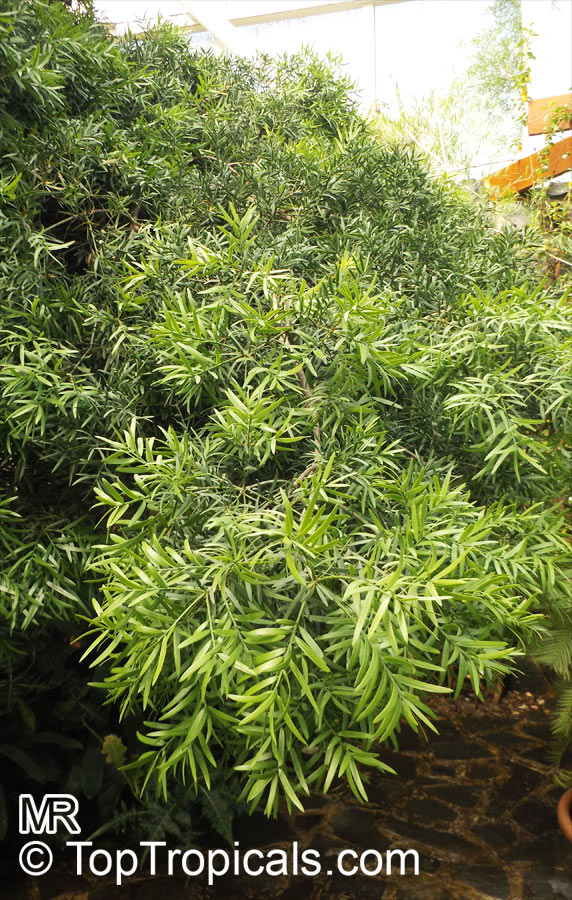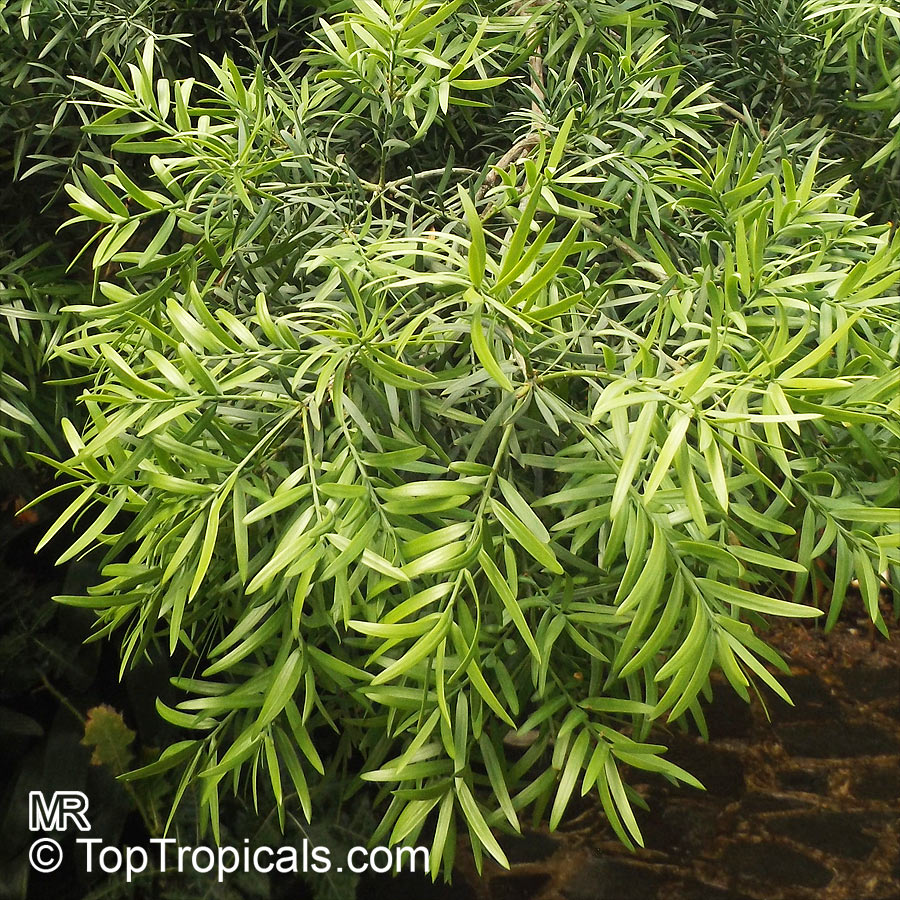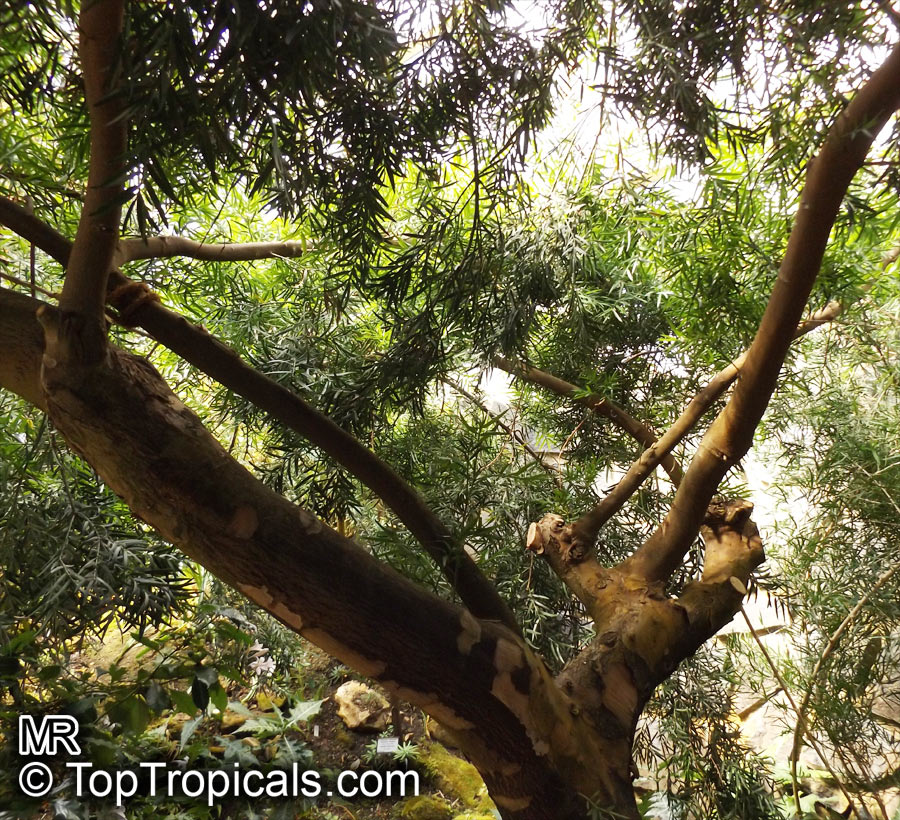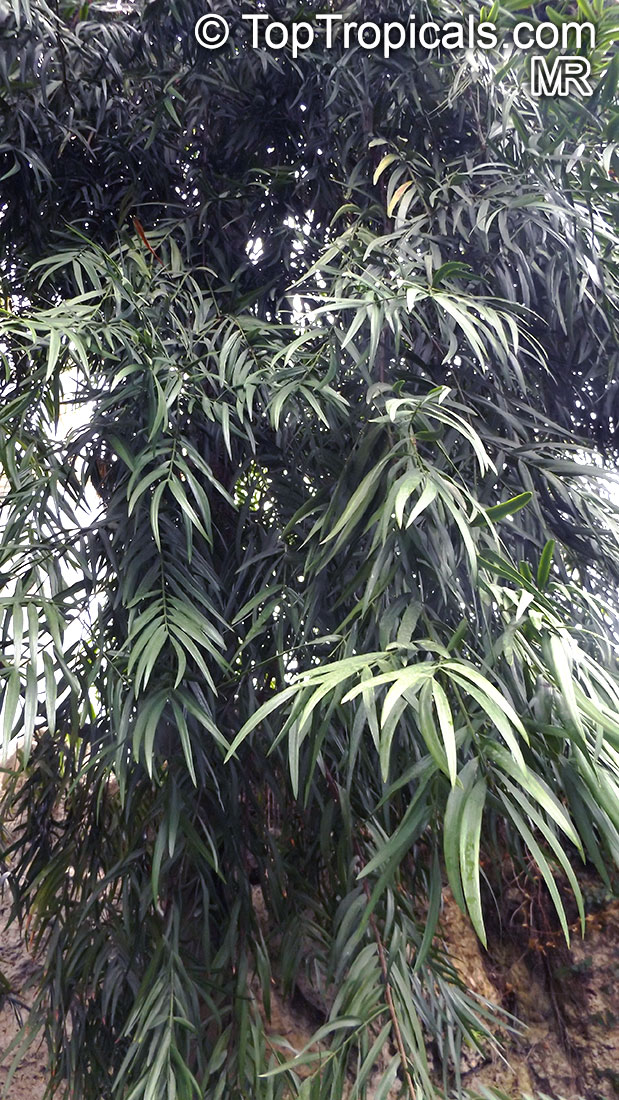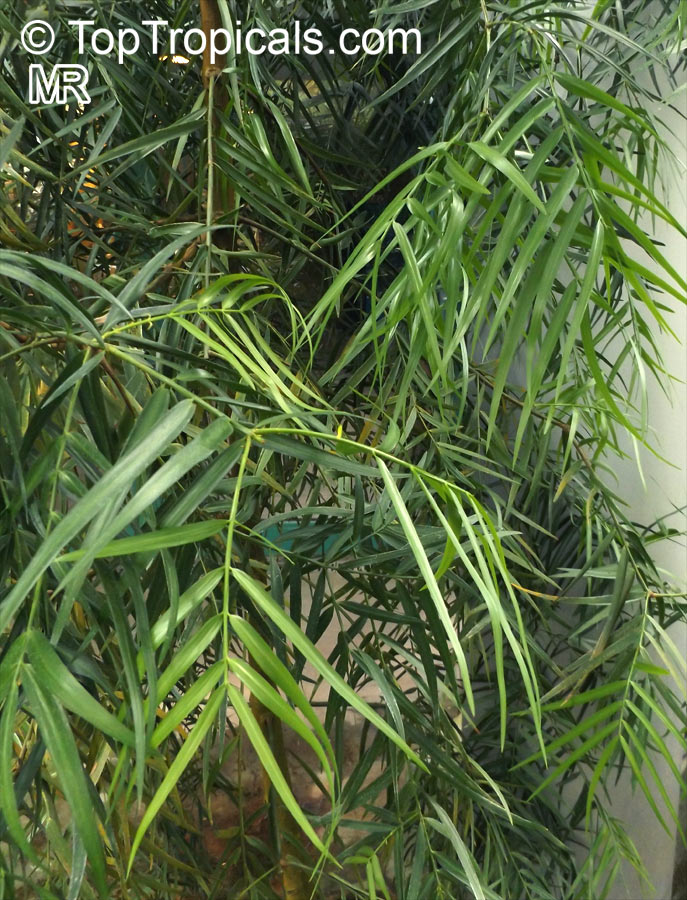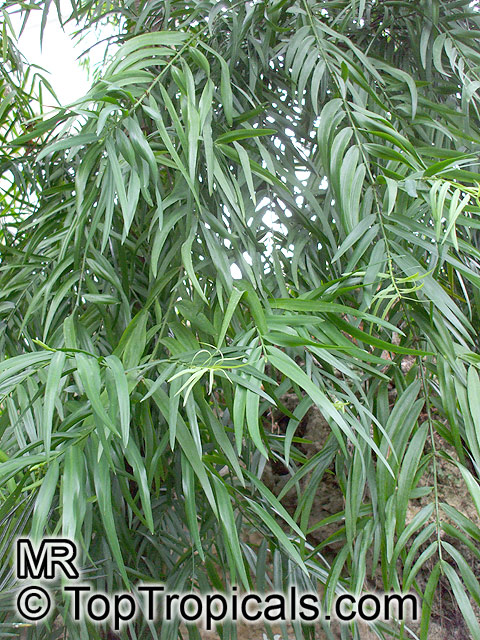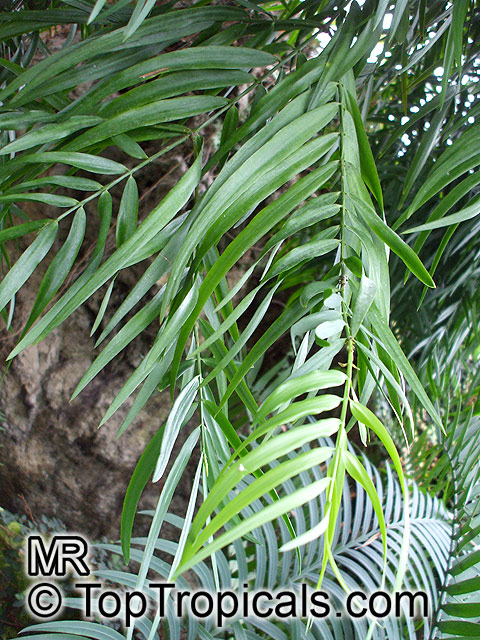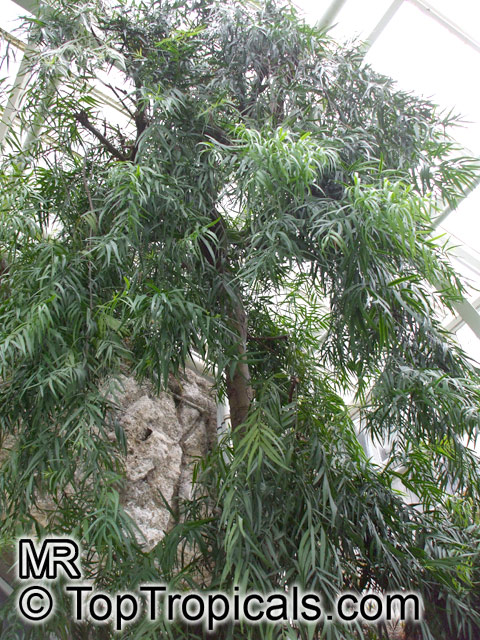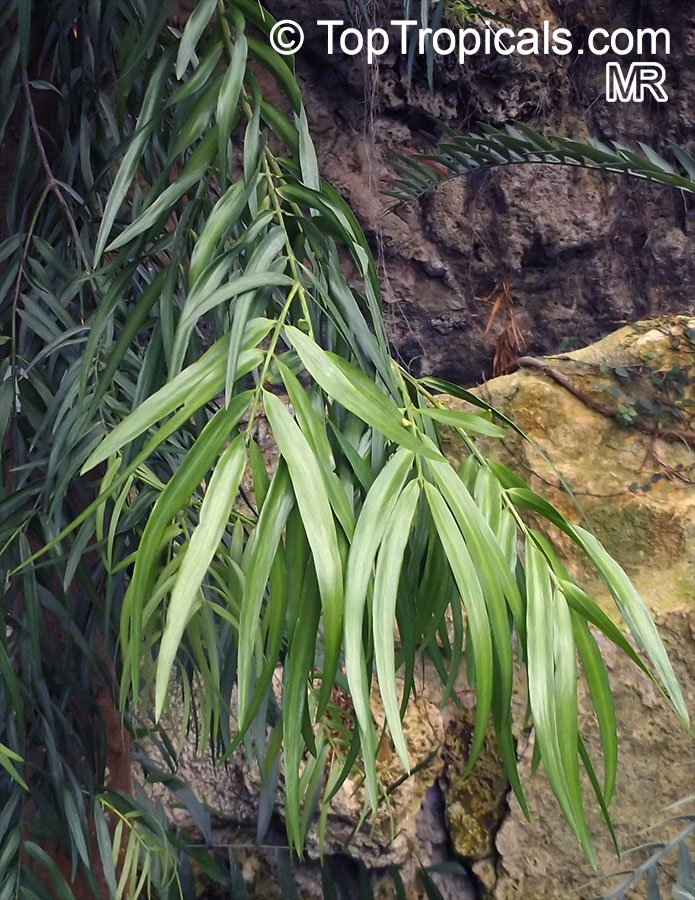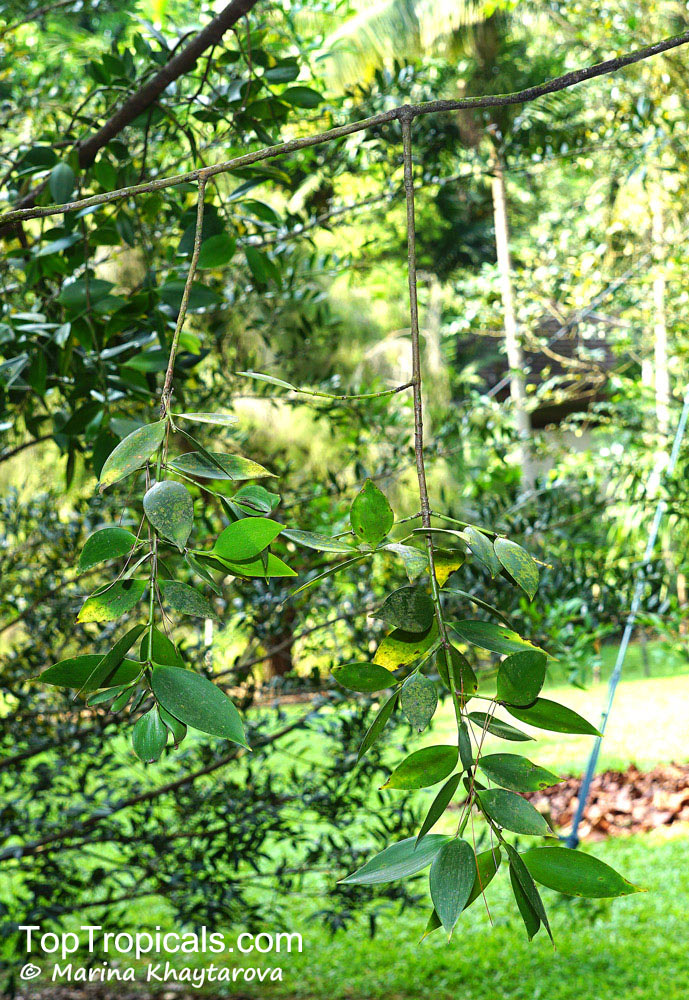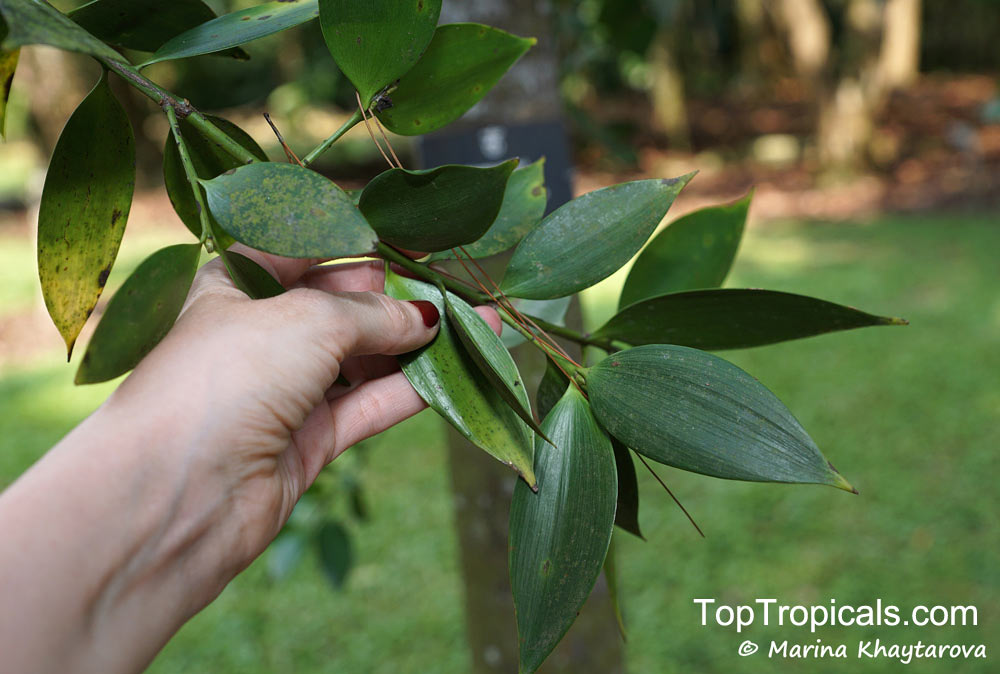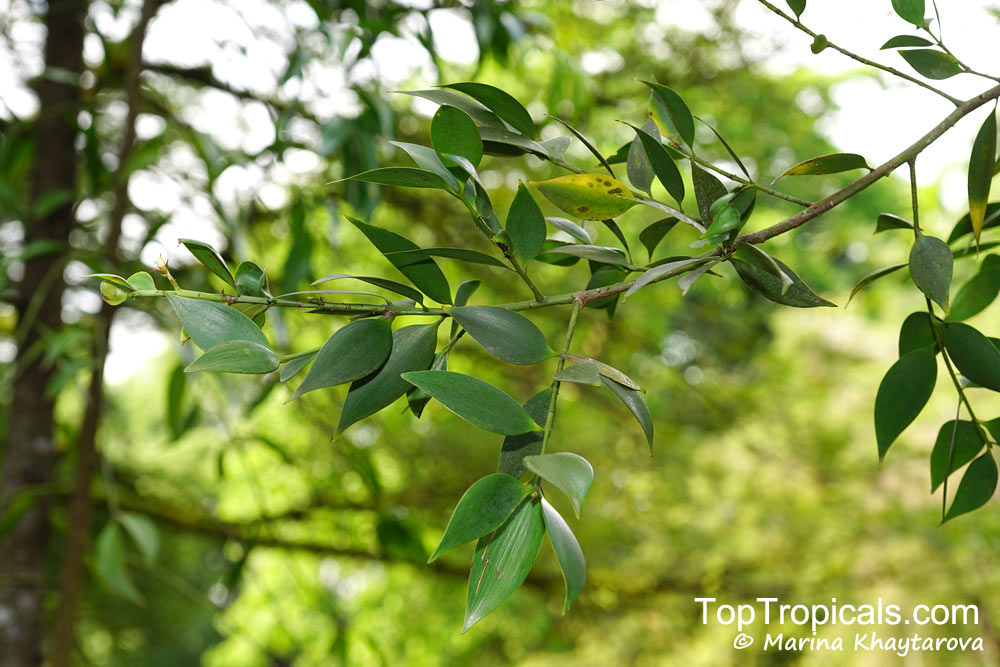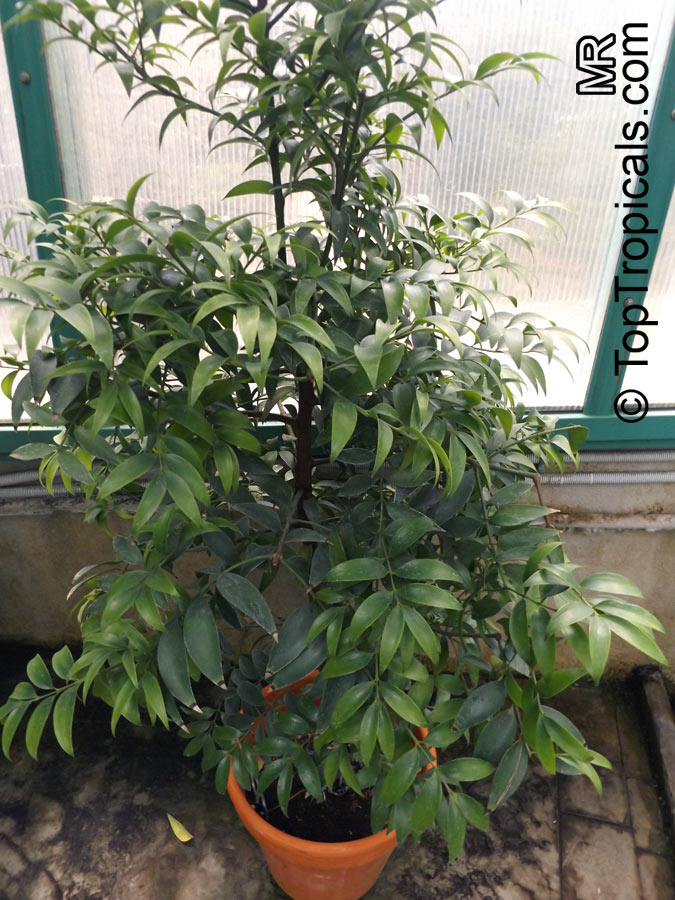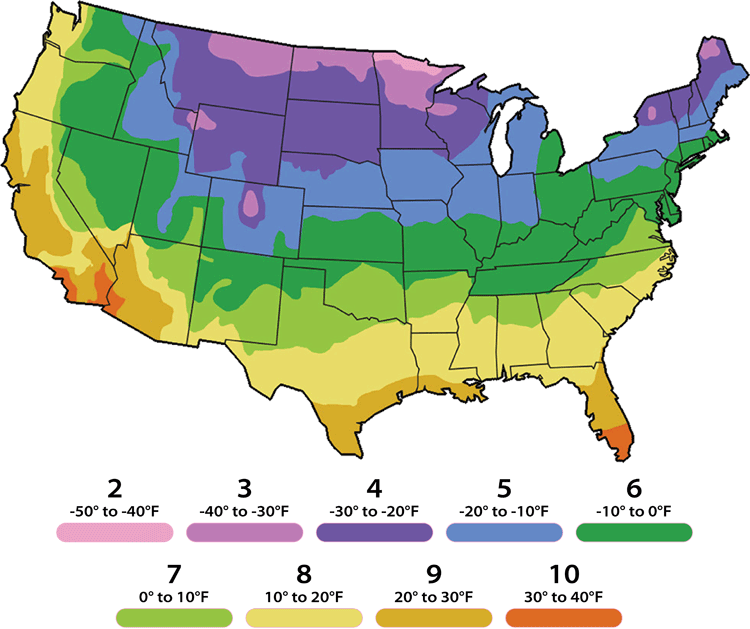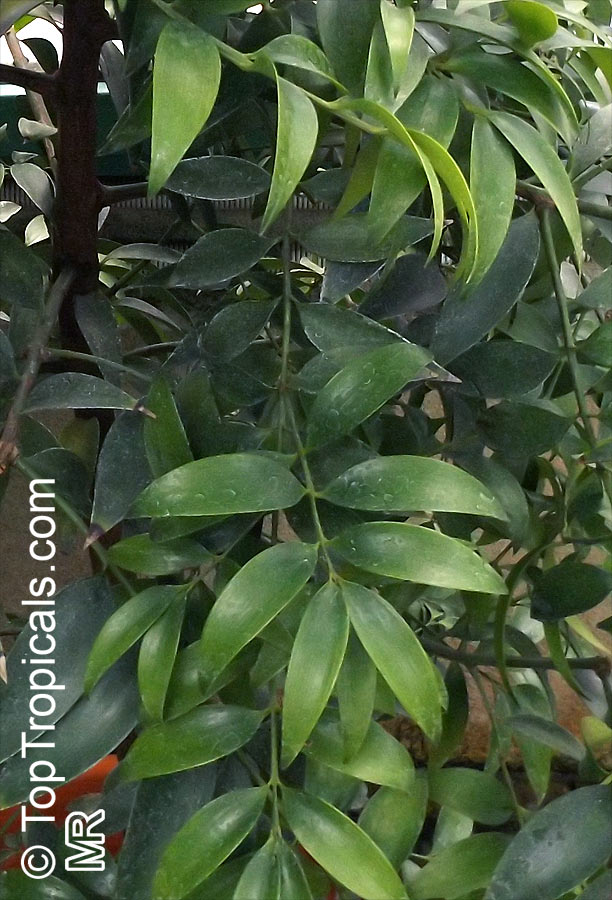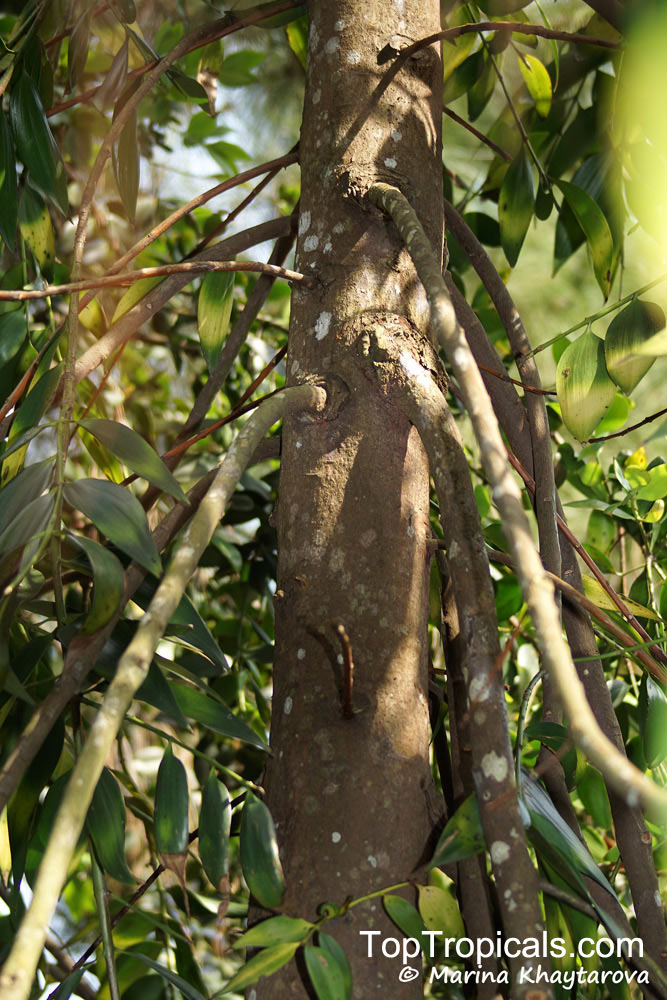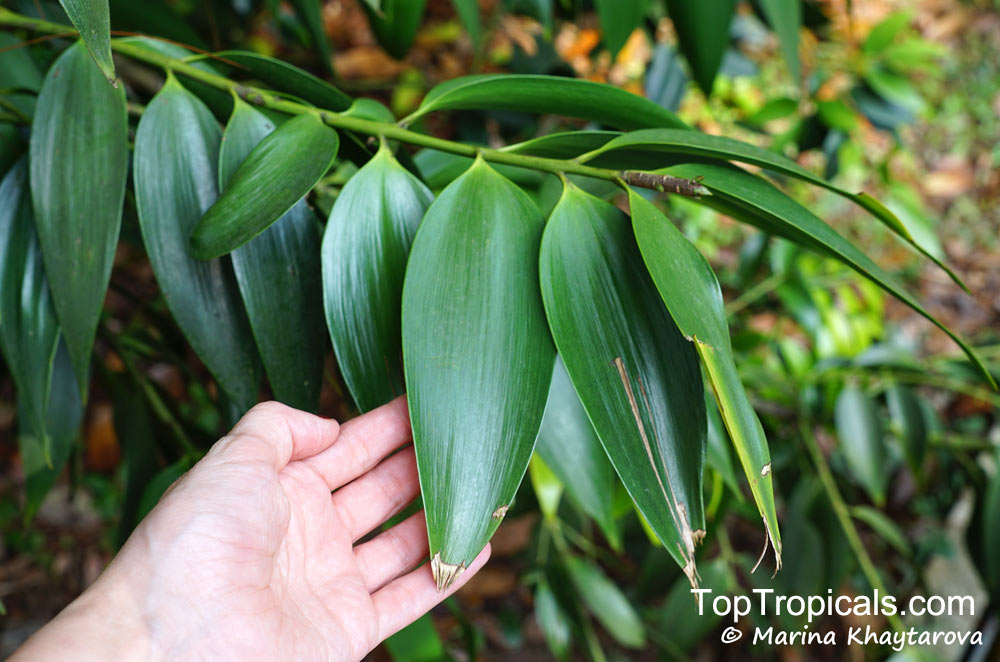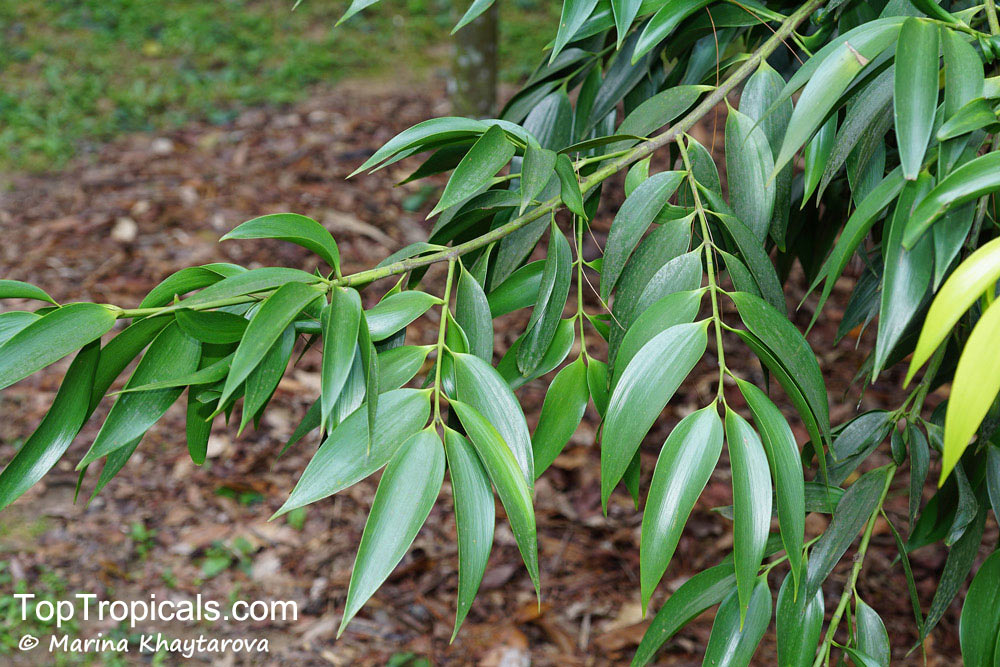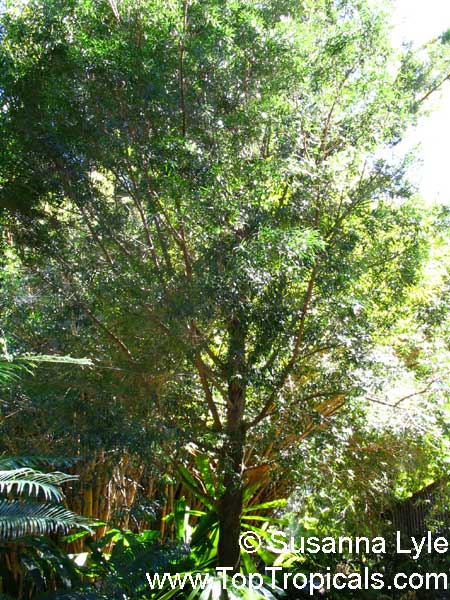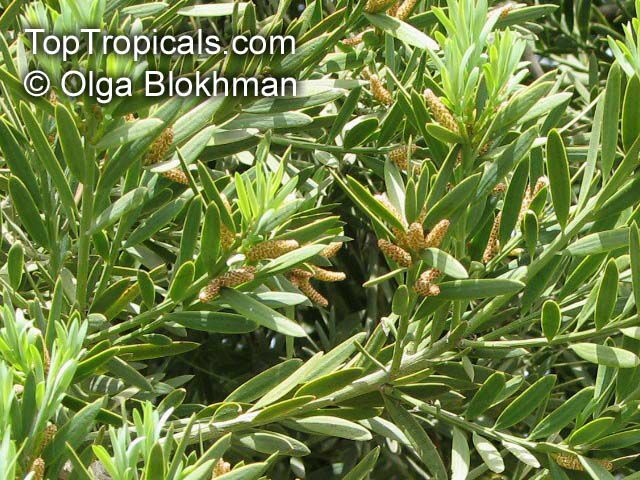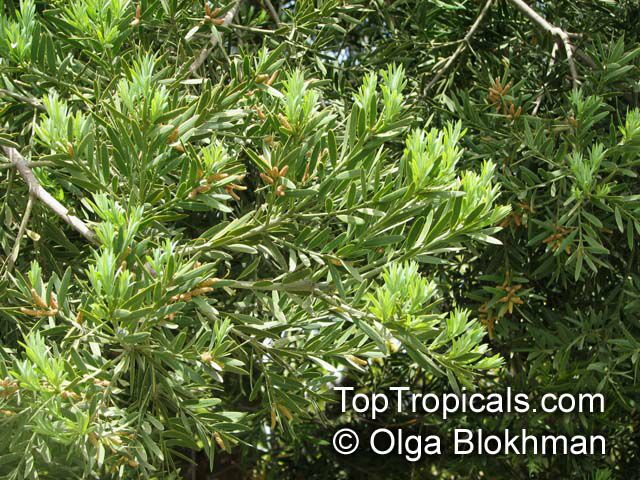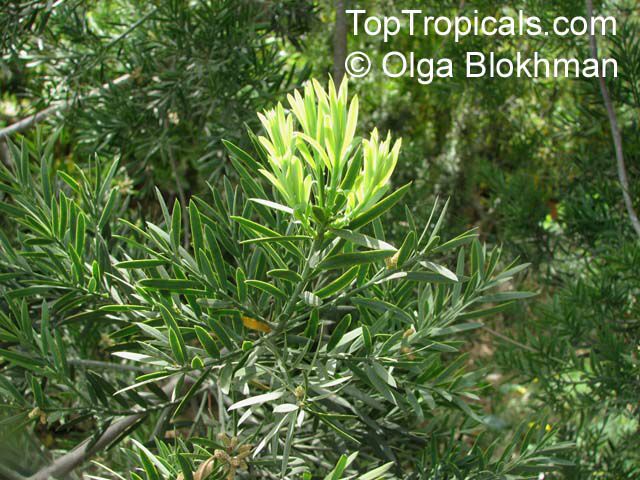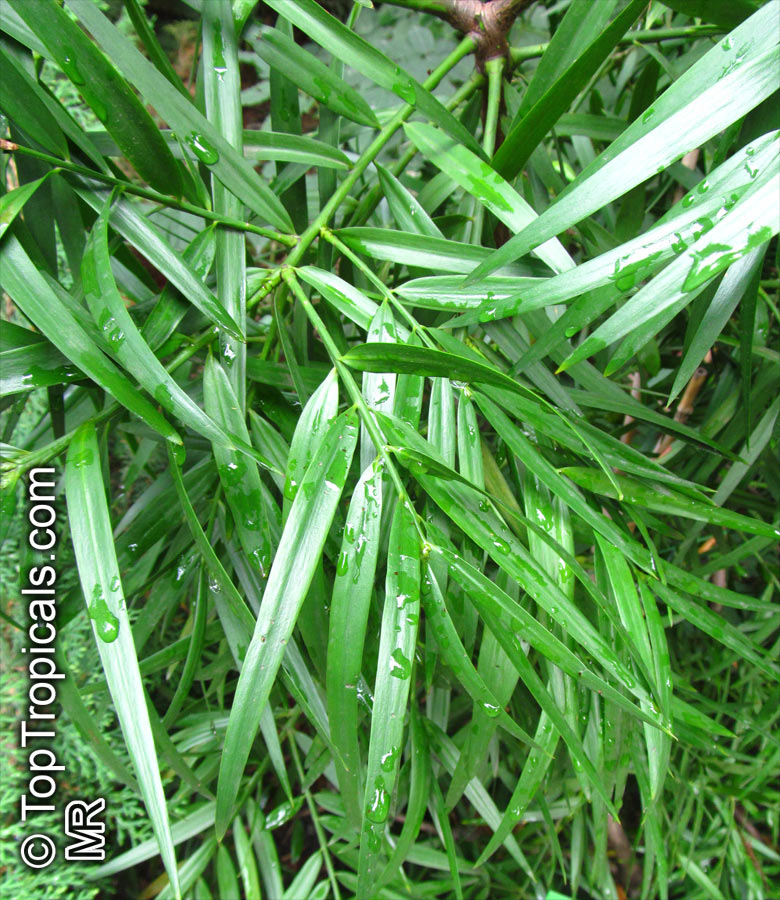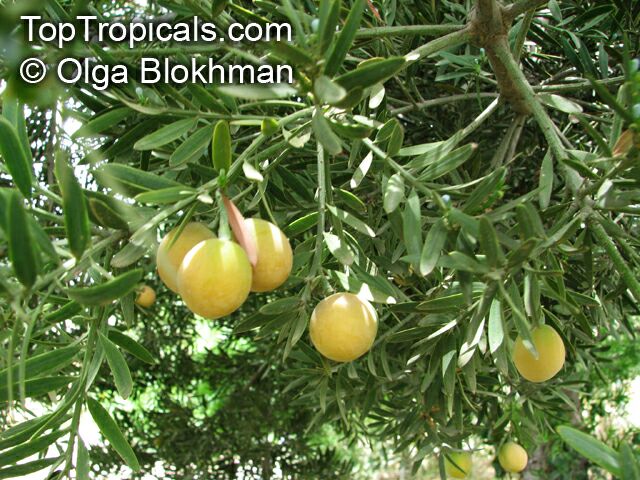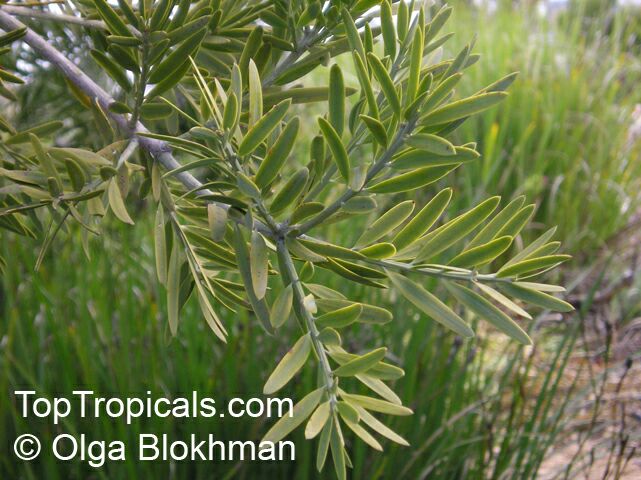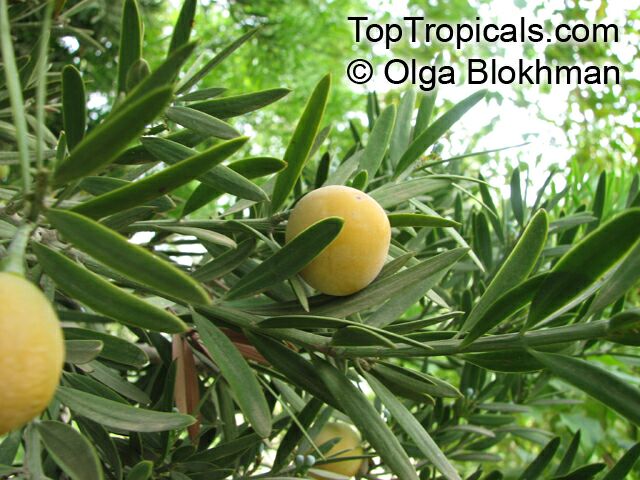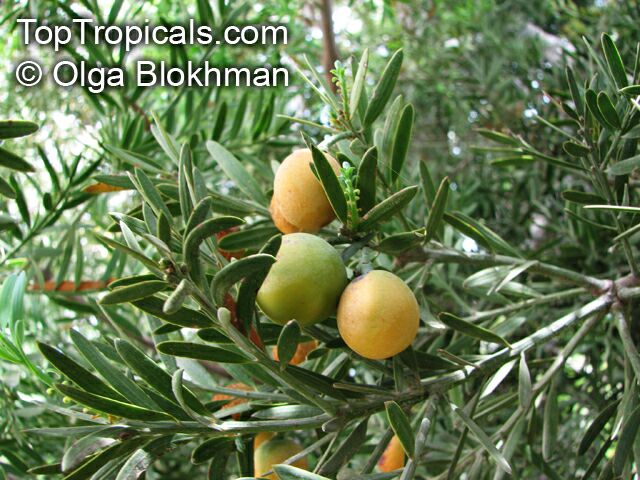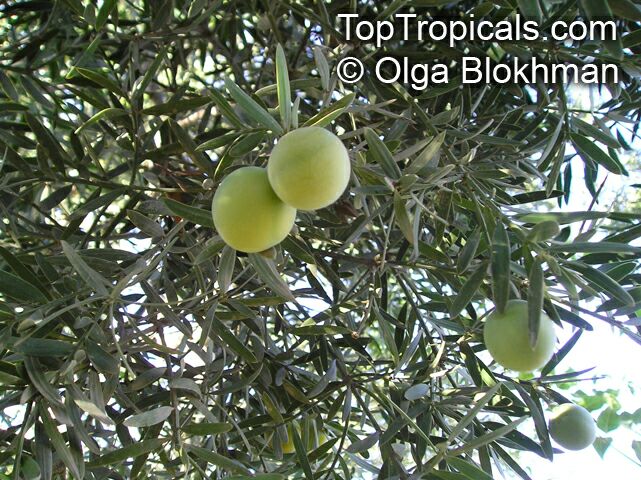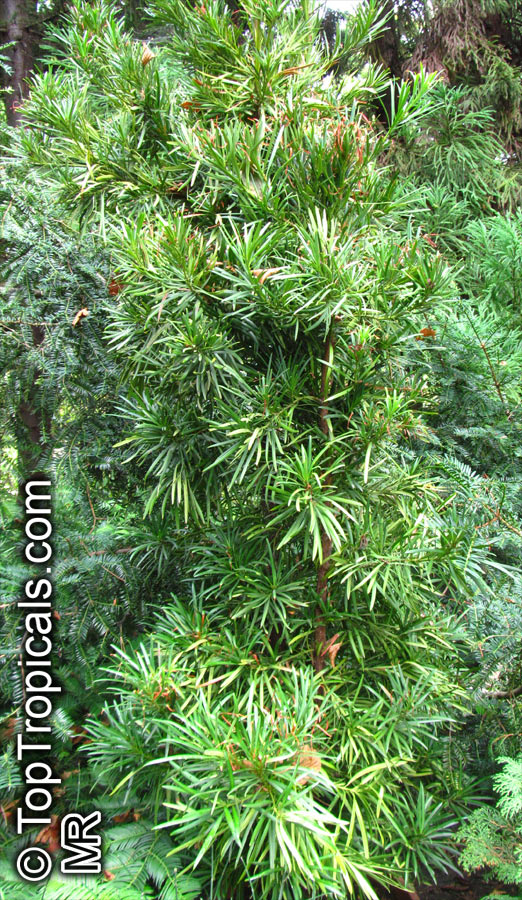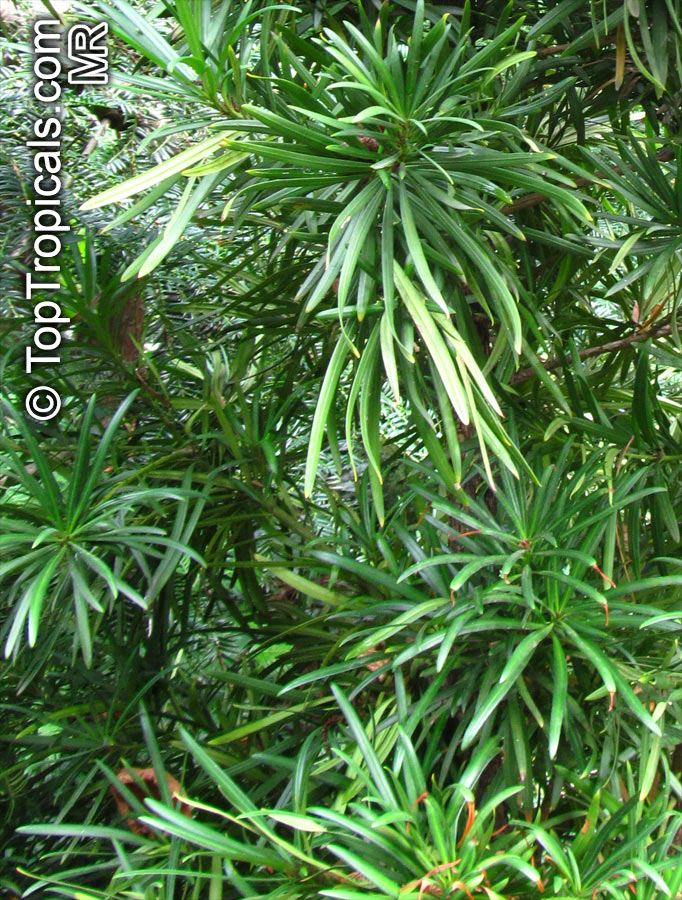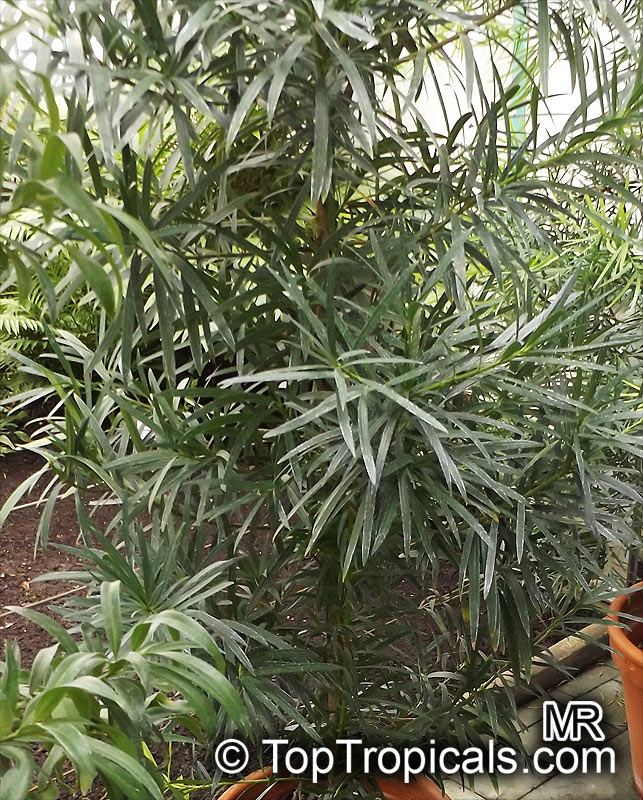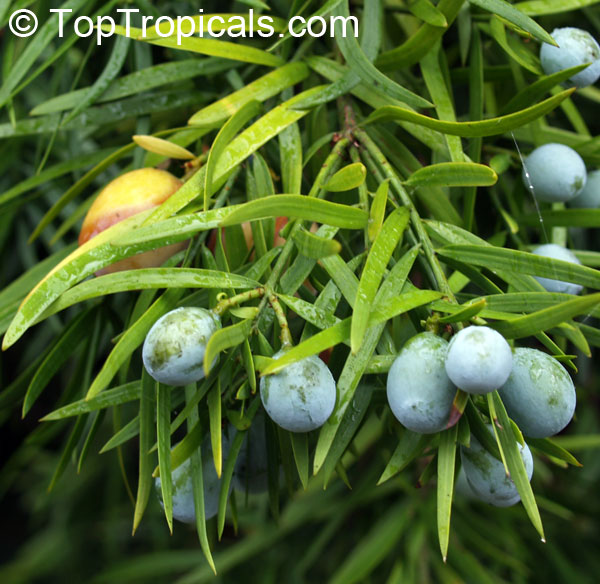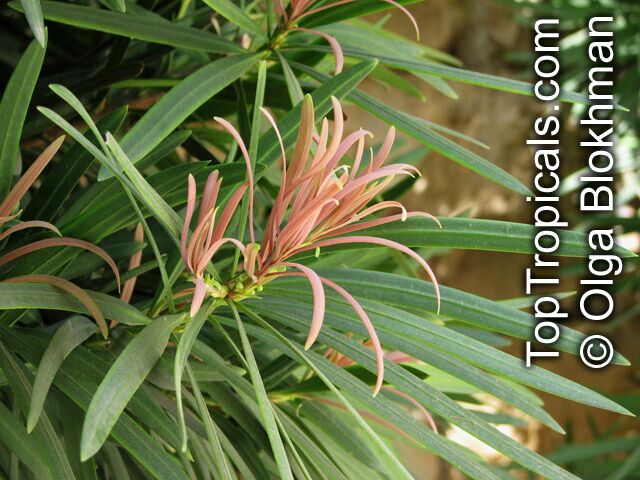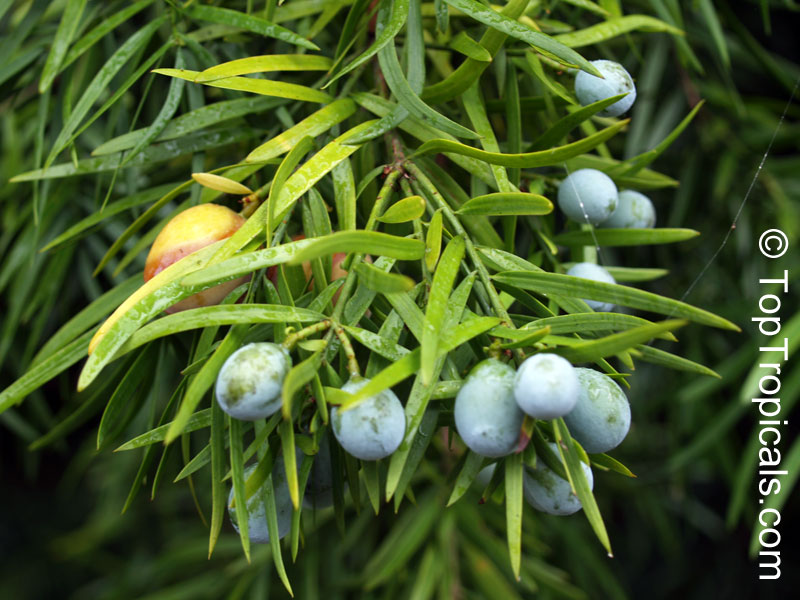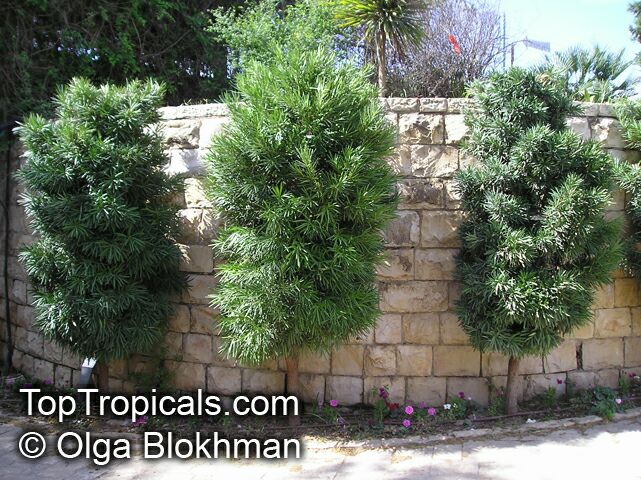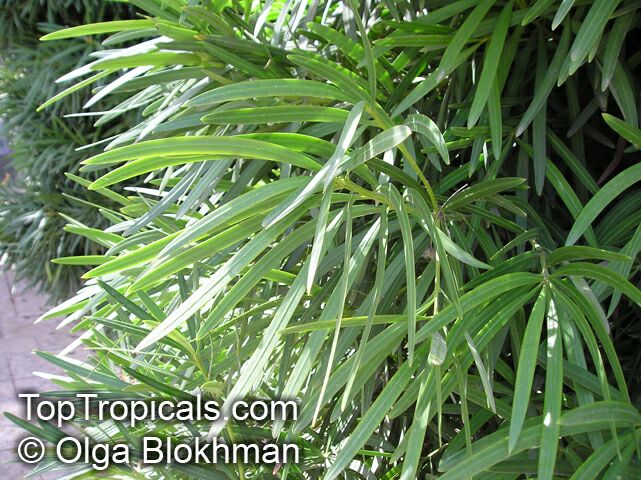Podocarpus - Search results
| Number of plants found: 14 | Next | 
|
Go to page: | 1 | 2 |
Botanical names: Afrocarpus falcatus, Podocarpus falcatus
Common names: Common Yellowwood, Bastard Yellowwood, African Pine Tree, Weeping Yew
Family: Podocarpaceae
Origin: South Africa






Botanical names: Afrocarpus gracilior, Podocarpus gracilior
Common name: African Fern Pine
Family: Podocarpaceae
Origin: Eastern Africa







Can grow up to 20 to 40 ft tall and make a lovely addition to any garden. This native to Eastern Africa can also be used to create a bonsai, because it has an attractive shape with graceful drooping foliage.
This evergreen grows best in full sun or semi-shade that has excellent drainage. It thrives in well-drained soil with a regular supply of water, especially during the dry season. To maximize its growth potential, the soil should be acid or neutral.
This tree can usually survive in USDA Zone 9-11, however it can become vulnerable to frost or a sharp decrease in temperatures. If you are in a colder climate, it can be grown in a pot and taken indoors during the cold season for additional protection. When potting and growing indoors, it needs a well-drained soil and full sun to look its best. It is a water-loving tree, so we recommend providing a moderate water supply, especially during the summer months.
In conclusion, Afrocarpus gracilior is an attractive and graceful evergreen that, with proper care and cultivation, can grow up to 40 ft tall and make a nice addition to any home or garden. For those living in colder climates, the tree can be grown in a pot and taken indoors during the winter season to avoid frost damage. With regular supply of water, full sun and a well-drained soil with neutral to acid pH, this tree will thrive.
Botanical names: Afrocarpus mannii, Podocarpus mannii
Common name: Afrocarpus
Family: Podocarpaceae
Origin: Tropical Africa




Afrocarpus mannii is a small tree, reaching up to 10-20 feet tall. It has a dense canopy of slender, dark green leaves, and bears small, oval, navy-blue cones.
Native to Tropical Africa, this unique tree requires quite particular care in order to thrive. This species requires full sun exposure, in semi-shaded areas, to ensure continual growth and healthiness. Regular watering is necessary, though too much water may lead to root rot, so a careful balance should be sought.
In USDA hardiness zone 9-11, Afrocarpus mannii grows well outdoors, though it can also be grown in a pot in cold regions as long as special care is taken to keep it healthy. In containers, an appropriate soil mix should be used, and the tree should ‘rest'â in winter, with limited watering and fertilization. If the temperature drops to around 45-50 degrees Fahrenheit, it may need some additional protection. Furthermore, the roots should be kept cool, so they remain dormant during the cold months.
In warmer climates, Afrocarpus mannii will grow vigorously and may require frequent pruning in order to maintain its desired shape and size. When pruning, take caution to not remove too much at once as this could weaken the tree and increase the risk of disease.
Afrocarpus mannii is a unique and exotic addition to any garden, with its unique dark green leaves and small, navy blue cones. This species requires special care and attention in order to thrive, but its unique beauty makes it a great reward for any gardener.
Botanical names: Nageia motleyi, Podocarpus motleyi
Common name: Nageia
Family: Podocarpaceae
Origin: Indonesia, Malaysia, Thailand





Botanical names: Nageia nagi, Podocarpus nagi, Myrica nagi
Common names: Asian Bayberry, Broadleaf Podocarpus
Family: Podocarpaceae
Origin: Japan, China








It is native to Japan and China, and is a commonly seen tree in the wild. One of the features of Nageia nagi is its ability to be used for bonsai. It is an evergreen tree that only grows up to 10-20 ft in height. It has a moderate growth rate, so you will have to be patient if you plan on using it for bonsai.
Nageia nagi thrives in full sun, however it can tolerate semi-shade as well. It needs ample water, but not too much. Its ideal environment is one with regular water, neither too little nor too much. In warmer climates, it's best to grow Nageia nagi in the ground, however if you live in a colder climate, growing it in a pot is the better option. In cold regions, it's important to ensure the pot has drainage holes and use a soil mix suited for a container plant.
Nageia nagi is suitable for USDA growing zones 8-10. Pruning is essential for the development of a good bonsai. Nageia nagi needs light pruning throughout the year to maintain its shape. You can also lightly prune your Nageia nagi during the growing season to encourage new growth and thicken the foliage.
Nageia nagi is a great tree to use in bonsai, due to its moderate growth rate and ability to withstand different growing conditions. It can tolerate a variety of light and temperatures, yet still needs regular pruning. With the right environment and care, Nageia nagi can grow up to 10-20 ft, and make a great addition to any garden.
Botanical names: Nageia wallichiana, Nageia blumei, Podocarpus blumei, Podocarpus wallichianus
Common name: Nageia
Family: Podocarpaceae
Origin: Southeast Asia






Botanical name: Podocarpus elatus
Common names: Plum Pine, Australian plum
Family: Podocarpaceae
Origin: Australia








This is a large genus of about 95 species, mostly found in the southern hemisphere in warm-temperate to tropical areas of New Zealand, north through south-east Asia, Japan, Nepal and the cooler parts of South America. Podocarps appeared in the fossil record at the beginning of the Triassic period (250 million years ago).
The fleshy stems of the seeds were eaten by Aboriginal people in some parts of Australia.
The plant prefers light (sandy), medium (loamy) and heavy (clay) soils and requires well-drained soil. The plant prefers acid and neutral soils. It can grow in semi-shade (light woodland) or no shade. It requires moist soil. The plant can tolerate maritime exposure.
Botanical name: Podocarpus elongatus
Common name: Breede River Yellowwood
Family: Podocarpaceae
Origin: South Africa





Unlike the other Podocarpus that are tall trees with long straight boles, Podocarpus elongatus are usually multi-stemmed and as broad as they are high.
Botanical name: Podocarpus falcatus
Common name: Outeniqua Yellowwood
Family: Podocarpaceae
Origin: South Africa






In its native South Africa, Podocarpus falcatus (or Outeniqua Yellowwood) is a magnificent big tree reaching heights of up to 50 feet and sometimes more. In cooler climates it is often chosen for its attractive forms and used as a bonsai.
The Outeniqua Yellowwood does best in full sun or semi-shade, and requires moderate water. While it thrives in U.S. Department of Agriculture plant hardiness zone 9 through 11, there are ways of cultivating the yellowwood in colder climates. When grown in a pot, the tree should be kept in a warm, sunny location during the day and moved to a protected place at night. Watering should be done lightly when temperatures drop below 40 degrees Fahrenheit, with heavier watering when temperatures are above 50F.
Throughout its life, the yellowwood tree needs to be fertilized on a regular basis during its growing season. This applies to times when the soil is kept consistently moist and temperatures are above 40 degrees. For indoor trees, it's best to wait to fertilize until the weather starts to warm in spring. The Outeniqua Yellowwood also appreciates regular pruning, and when Growing in a pot, a light trimming every month helps to maintain the desired shape.
In conclusion, the Podocarpus falcatus is an ideal specimen for any garden, particularly in the warmer climate. Although it is a fast-growing species, proper pruning and care will ensure that the tree reaches its majestic potential. Whether used as a bonsai, a container plant or an indoor Christmas tree, the Outeniqua Yellowwood is a beautiful addition to any space.
Botanical name: Podocarpus macrophyllus
Common names: Buddhist Pine, Chinese Yew, Kusamaki, Inumaki
Family: Podocarpaceae
Origin: Japan, China











It is a popular large shrub or small tree in gardens. Likes fertile, well drained soil. Good coastal plant; tolerates salt spray and withstands heat!
| Next |  |
Use link to repeat this search:
https://toptropicals.com/cgi-bin/garden_catalog/cat.cgi?find=Podocarpus&search_op=and&keyword_op=and&language=e&number=10
&no_change_lang=1&user=tt&sale=1&first=0

